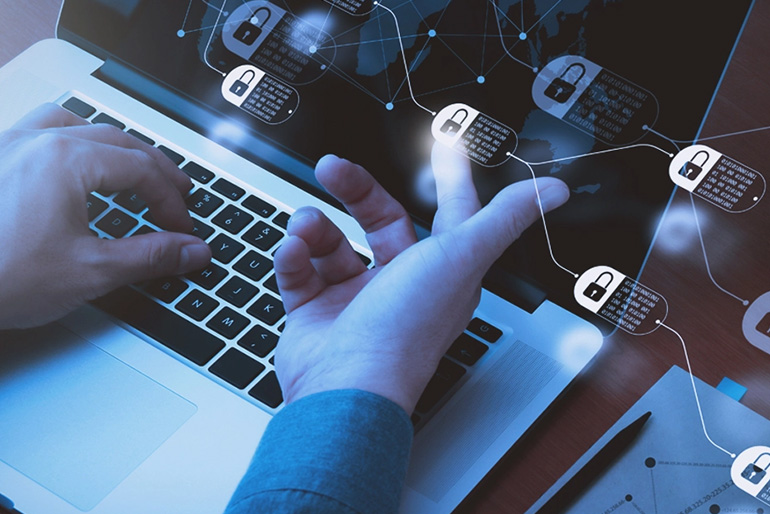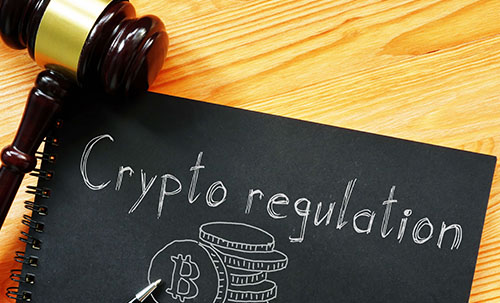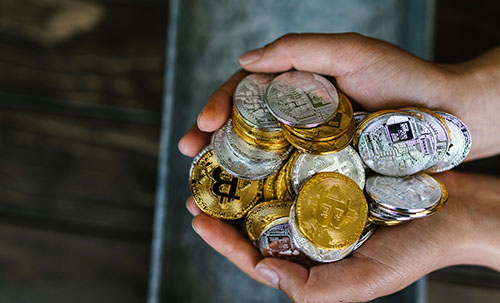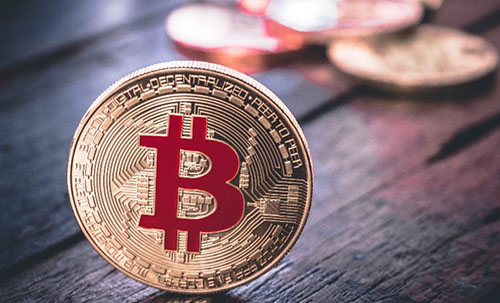What is blockchain technology and how does it work?

20 July 2022
With its trustworthy record-keeping capabilities, blockchain technology has gotten the financial industry buzzing. But what exactly is it, and what does it mean for you? Imagine a secure world with no fraud and cybercrime. Or a world where record-keeping and paperwork could be replaced with speed and efficiency. In an increasingly digital landscape, this utopia is well within our reach with blockchain.
The word “blockchain” has become synonymous with a growing need for security and transparency. But what makes it so special? And how can blockchain enhance our everyday lives?
DBS has been applying blockchain and artificial intelligence (AI) technologies to create a banking experience that’s innovative, intuitive, and fuss-free. So, here's our guide to blockchain, and how it’s making the world a better place.
Blockchain explained
The word “blockchain” is actually the name of a new technology that acts as an incorruptible digital ledger. As a digital ledger, blockchain serves the fundamental purpose of storing information, digitally.
Breaking the word “blockchain” down can help us understand it better. A blockchain is actually just a chain of blocks that contain information. Blocks of encrypted data added chained together to form what we know as a blockchain.
As an incorruptible record of transactions, blockchain also doesn’t rely on external authorities to validate that data is indeed authentic.
In modern practice, blockchain as a distributed ledger technology (DLT) is typically used to store data on economic transactions. However, the blocks can be used to store just about any kind of information, forming a chain of data.
All of these elements set blockchain apart from traditional record-keeping, which might be prone to inefficiency, error, and data manipulation.
Why is blockchain technology important?
Information is the world’s backbone. From the way businesses operate, to the way we keep abreast of what’s happening around the world, there’s no doubt that our lives get better the more information we have, and the faster we’re able to get it. Critically, we also want to make sure that the information we’re getting is accurate.
Here’s where blockchain comes in. A blockchain network allows us to track numerous processes from end to end. This includes payments, purchases, accounts and production, among other processes. This creates entirely traceable supply chains and systems.
Because the blockchain system allows us to access and relay information in a manner that’s immediate, organised, and completely transparent, it can improve the way global supply chains operate by instilling confidence in transactions and creating new opportunities for efficiencies.
Moreover, the information held in a blockchain is sharable, but can otherwise only be accessed by permissioned network members. This makes the information less vulnerable to cyber attacks and fraud.
How does blockchain technology work?
When someone requests a transaction on a blockchain network, it is broadcast to a peer-to-peer network made of computers. These computers, also known as nodes, will then use algorithms to verify and validate the transaction and the status of the user. Once this is done, a new block of data is created, and then added to the blockchain in a way that is immutable.
We know that blockchain’s true value is in being able to provide distributed security. In order for this to happen, there are many key components and characteristics that have to come together. In a blockchain, transactions are recorded with a cryptographic signature called a hash.
And so, a blockchain has the following properties:
Immutable - All validated records cannot be reversed or changed. If even one block in the chain is modified, tampering would be evident
Time-stamped - Each transaction has a timestamp recorded on a block
Secure - All records are encrypted, individually
Programmable - Programmable blockchains allow for greater potential to do many things.
Distributed - Every participant in a blockchain network will have a copy of the ledger, ensuring transparency
Unanimous - Every participant in a blockchain network agrees that each of the records is valid
Anonymous - The identity of the participants within a network can remain either anonymous or pseudonymous
A big part of blockchain security is that if cyber criminals intend to hack a blockchain, they would have to tamper with or modify every single block in a blockchain. This means that growing blockchains like the open source Ethereum blockchain are gaining significant security continually every time a new block is added to the chain.
Verified transactions such as these might typically involve cryptocurrency, smart contracts, records, or other forms of information.
With that said, you should always be wary of hackers who might try to determine your information that grants them access to your information. For example, a cryptocurrency transaction might require two-factor authentication. If a hacker gains access to components such as your email or mobile phone, he might be able to authenticate transactions on your behalf.
With cryptocurrencies, you may also have a private key that grants access to your digital wallet. If hackers access this key, they might be able to infiltrate and steal from your wallet.
What are the types of blockchain networks?
Not all blockchain networks are the same. Every blockchain network can be programmed and built to serve a different function. The types of blockchain networks are public, private, permissioned, and consortium blockchains.
Public blockchain networks are a decentralised peer-to-peer network that just about anyone can participate in. Cryptocurrencies such as Bitcoin are one example, since anyone can purchase Bitcoin. Public blockchain networks are known to require higher computing power.
Private blockchain networks operate with one organisation governing who can participate in the network. The organisation maintains the shared ledger, and can even run the blockchain network behind a corporate firewall. In some cases, this can be used to instil more trust and confidence.
Permissioned blockchain networks are typically set up by businesses in order to place restrictions on who can participate, and what they can do on the network. Most of the time, participants will need to be granted an invitation or special access to join. Public blockchain networks can also be permissioned.
Consortium blockchain networks refer to networks that are run and maintained by multiple organisations. Organisations can decide who can participate in the network, and allow a shared responsibility for the blockchain.
When did blockchain become popular?
With blockchain technology having so many benefits, you might be wondering how come the technology never existed prior to the last few years. Well, despite it being new , the origins of blockchain date back to the 1990s, as observed in white papers.
Later in 2008, an anonymous Satoshi Nakomoto released a famous Bitcoin white paper called “Bitcoin: A Peer-to-Peer Electronic Cash System”, which detailed a payment solution that would rely on a proof-of-work chain that could “outpace attackers”.
And then following the historic success of Bitcoin in December 2017, blockchain technology boomed with numerous industries adopting it as a solution that could revolutionise supply chains.
From a financial standpoint, blockchain technology gained popularity because it prevents faking, hacking, and double spending. For instance, imagine someone wanted to create a new currency. Prior to blockchain, it would have been impossible to know whether the person is stealing your money, or is simply giving more money to themselves. Having a single person in charge of a currency might contribute to a sense of mistrust and a lack of transparency.
With blockchain technology, components such as currency can’t be manipulated. Since blockchain is a peer to peer network, it disables external authorities from controlling the evolution of information in a public blockchain. Therefore, owners of a digital asset that utilises the blockchain system are able to trust its value.
What are some applications of blockchain technology in everyday life?
Every business is constantly looking for new ways to improve efficiencies and systems. That’s because doing so improves their ability to achieve higher returns from the resources they’ve invested. Modern businesses use productivity tools and process improvement software to achieve this.
In some way, one could think of blockchain technology as such a software. In fact, blockchain has already cemented its presence in many industries around us. Some of these industries, among others, include
Financial services
Healthcare
Food safety
Data
Real estate
Automotives
Voting
Intellectual property
These industries might value a combination of speed, transparency, and security.
For example, the use of blockchain technology in healthcare could help ensure that our personal health information is encrypted, and that it can be shared with providers without our privacy getting breached.
With regards to intellectual property, blockchain technology allows content creators to sell their creations as unique cryptographic tokens that can’t be replicated. This has contributed to the recent surge in conversations about non-fungible tokens (NFTs), which can even represent real world items like real estate.
In the financial services industry, blockchain has revolutionised numerous aspects of settlements and transactions, by improving transparency and reducing transaction costs by making processes more efficient.
In 2021, DBS founded a Singapore interbank payment system with JP Morgan and Temasek. The enterprise blockchain platform called Partior will improve the speed and reduce the transaction costs of cross-border payments, which are expected to reach $156 trillion in 2022.
This is achieved with a wholesale clearing and settlement system that improves transparency and reduces the need for intermediaries.
What’s next for blockchain?
With blockchain technology evolving rapidly, many are anticipating what’s next. Expect to see the use of blockchain in more sustainability-driven initiatives to offset carbon, with a shift to less energy-intensive models of blockchain technology.
The creator economy is also expected to continue growing, with NFTs and the metaverse concept driving the desire for unique digital tokens enabled by blockchain technology.
More than anything, the security of blockchain may soon help solve many problems relating to the Internet of Things (IoT), with its capability to create interactions of transactions between machines.


